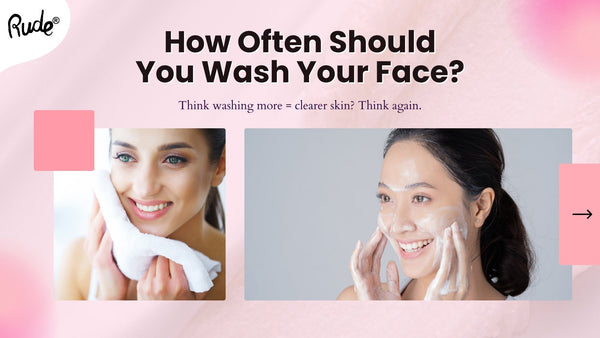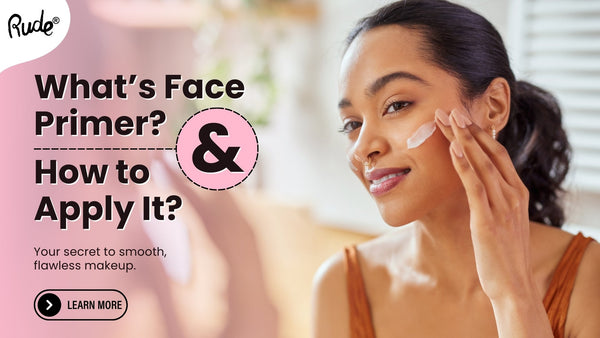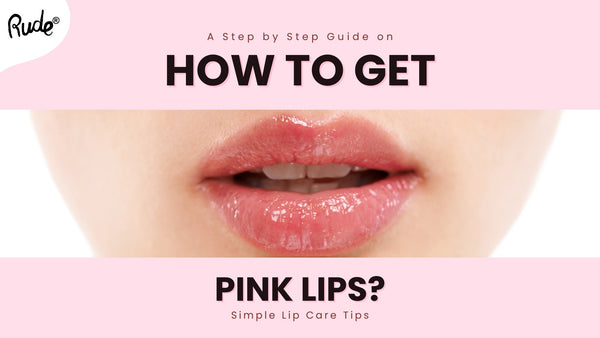What Makeup Eye Shadow Is Fine for Your Skin and Eye Color?

Choosing the right eyeshadow is more than just picking a pretty color, it’s about finding shades that work harmoniously with your skin tone, undertones, and eye color. Using the wrong shades can make your look appear unbalanced or dull, while the right ones can enhance your look effortlessly.
This guide answers common questions like, “What makeup eye shadow is fine for your skin?” while helping both eyeshadow for beginners and enthusiasts make informed choices.
In this article, we’ve covered how to pick the best eyeshadow shades based on your skin tone, eye color, and undertones. You’ll learn about the common mistakes to avoid, how to blend like a pro, and even how to select versatile palettes that cater to different needs.
Along the way, we’ve also addressed concerns like creasing, fading, and matching shades with your overall look.
If you’ve ever wondered why some eyeshadows don’t look as good on you as they do in the pan or struggled to find the perfect palette, this post will guide you with practical, easy-to-follow tips.
Why Choosing the Right Eyeshadow Matters?
The right eyeshadow can transform your entire makeup look, enhancing your skin tone, undertones, and eye color for a balanced and harmonious appearance. Understanding how to match your looks with the perfect shades ensures that your eyes stand out while complementing the rest of your makeup seamlessly.
Curious about how to find the perfect match? Let’s explore how you can choose shades personalized to your looks.
What Are the Best Eyeshadow Colors for Different Eye Colors?
Choosing eyeshadow based on your eye color is one of the simplest ways to create a stunning and balanced look. Each eye color has certain shades that make it pop:

Brown Eyes
Brown eyes are versatile and pair beautifully with many shades. To highlight your brown eyes, opt for warm tones like gold, copper, and bronze. Earthy tones like deep green or taupe can also create a soft, natural look. Want to try something bold? Purple or teal can create an eye-catching contrast.
Blue Eyes
Enhance blue eyes with complementary shades like peach, bronze, and warm browns. Soft terracotta or burnt orange tones can create a striking contrast while still keeping the look natural.
Hazel Eyes
For hazel eyes, earthy tones such as olive green, golden brown, and even champagne shades work perfectly. These tones pick up the green and golden flecks in hazel eyes, making them stand out.
Grey Eyes
Smoky tones like slate grey or charcoal beautifully accentuate grey eyes. For a softer look, mauve and lavender add a gentle yet flattering contrast.
When selecting shades for any eye color, a color wheel for eyeshadow can be a handy tool to identify complementary colors. It visually demonstrates which shades enhance your natural tones.
How Do You Pick Eyeshadow for Your Skin Tone?
Matching eyeshadow with your skin tone ensures that the colors look seamless and complement your overall appearance. Here’s how you can choose based on skin tones:
Fair Skin

Lighter shades like pastel pinks, soft peaches, and light taupes work beautifully on fair skin. These colors create a natural, subtle glow without overpowering the complexion. For a bold look, silvery metallics can be a stunning choice. Makeup for pale skin often benefits from avoiding overly dark shades that can look too harsh.
Medium Skin

Warm neutrals like caramel, bronze, and rust shades enhance medium skin tones. These colors blend effortlessly into the skin and add depth to your eyes. A pop of coral or golden shimmer is perfect for a glamorous look.
Dark Skin

Rich, vibrant tones like jewel greens, deep purples, and metallic gold work wonders on darker skin tones. These shades bring out the warmth in the skin while adding drama to the eyes. Matte browns and terracotta hues are also great options for a natural finish. When considering eyeshadow for dark skin, avoid shades that are too light or chalky, as they may not blend well.
When in doubt, test colors on the back of your hand to see how they look against your skin tone.
Should You Consider Undertones When Picking Eyeshadow?
Yes! Your undertone plays an important role in how colors appear on your skin. Here's a quick guide to finding eyeshadow shades based on undertones:

1. Cool Undertones
Look for shades with blue or purple bases, like lavender, silvery greys, and icy pinks. A cool tone eyeshadow palette is a good investment if you have cool undertones. Avoid overly warm or yellow-based shades, which can clash.
2. Warm Undertones
Opt for warm colors like gold, bronze, copper, and rich oranges. These shades complement the natural warmth in your skin, creating a cohesive look.
3. Neutral Undertones
Lucky you, most colors will suit your skin! Shades like rose gold, champagne, and taupe are excellent go-to options.
By understanding your undertone, you can confidently choose shades that flatter your skin and brighten your eyes.
How Do Neutral Eyeshadow Palettes Work for All Skin Tones?
Neutral palettes are timeless and versatile, making them important in any makeup kit. They include shades like beige, taupe, brown, and soft peach, which work well for everyday looks or as a base for bolder styles.
Here’s why they’re essential:
For Fair Skin
Light taupe or champagne shades provide a subtle glow without looking overwhelming.
For Medium Skin
Bronze or caramel hues add depth and dimension while maintaining a natural appearance.
For Dark Skin
Rich chocolate or mocha tones act as beautiful neutrals, and shimmery golds can elevate your look.
The best neutral eyeshadow palette will usually include a mix of matte and shimmer shades, allowing you to create both natural and dramatic looks.
What Are the Biggest Mistakes to Avoid When Choosing Eyeshadow?
Picking the wrong eyeshadow can leave your look unbalanced. Avoid these common mistakes:

Ignoring Skin Tone and Undertones
Using colors that don’t match your skin can make your eyeshadow look ashy or too harsh.
Overlooking Eye Color
Not all shades flatter every eye color. For example, the worst eyeshadow colors for blue eyes are shades too similar to your eye color, like icy blues, as they fail to create contrast.
Skipping Primer
Without a base, even the best shades can fade or crease throughout the day.
Choosing Shades Without Testing
Colors can appear different in the pan versus on your skin. Always swatch before committing.
By avoiding these pitfalls, you’ll achieve a polished, professional look.
Can You Create a Custom Eyeshadow Palette?
Yes, creating your own palette is a fantastic way to ensure you always have shades that suit your needs. Start by including:
- Base Colors: Light shades for priming or blending, like beige or cream.
- Transition Shades: Medium tones like soft brown or taupe to blend darker colors.
- Pop Colors: Bright or bold shades like teal, purple, or pink for statement looks.
- Shimmer and Matte: A mix of finishes adds variety and versatility.
A create your own makeup palette approach ensures you only invest in shades you’ll actually use, saving space and money.
How to Pick Eyeshadow Based on Skin Tone?
Finding the right eyeshadow shade for your skin tone can make all the difference in creating a polished, harmonious look. Let’s explore which colors will best enhance fair, medium, olive, and dark skin tones.
What Eyeshadow Shades Work Best for Fair Skin Tones?
For those with fair skin tones, the key is to choose soft, subtle shades that improve your natural beauty without overpowering your complexion. Light and pastel shades often work best, as they blend seamlessly into pale skin.
Soft Neutrals
Shades like champagne, ivory, and pale taupe are ideal for everyday wear and are important in the best neutral eyeshadow palette. These colors create a clean, natural finish without looking too dramatic.
Pinks and Peaches
If you’re looking for a playful yet delicate touch, pink eyeshadow looks or soft peach tones are perfect. These shades add a gentle flush of color that complements fair skin beautifully.
Avoid Harsh Shades
Dark or overly bright shades can overwhelm pale skin and make the makeup look too heavy. Stick to lighter, buildable tones for a more balanced appearance.
For fair skin, makeup that incorporates subtle, rosy hues works wonderfully, while soft metallic like champagne shimmer can add just the right amount of glow.
What Are the Best Eyeshadow Colors for Medium and Olive Skin Tones?
Medium and olive skin tones offer a versatile canvas for a wide range of eyeshadow shades. The undertones in this skin type often lean warm or neutral, making it easier to experiment with various looks.
Warm Neutrals
Shades like caramel, golden brown, and bronze improve the natural warmth in makeup colors for olive skin. These shades create a seamless look that flatters the complexion.
Cool Tones
If your undertone leans more neutral or cool, try experimenting with cool tone eyeshadow like mauve, plum, or even slate grey. These shades add depth and contrast, creating a polished, modern look.
Versatile Palettes
A mix of warm and cool shades is ideal for olive skin. For example, a neutral palette with options for both matte and shimmer finishes ensures flexibility in creating subtle day looks or bold evening styles.
Medium and olive skin tones benefit from a balance between warm and cool hues. Always swatch shades on your skin to see how they interact with your undertone.
What Shades Are Perfect for Dark Skin Tones?
Dark skin tones shine when paired with rich, vibrant eyeshadow colors that amplify their depth and warmth. Unlike lighter skin tones, dark skin can beautifully carry bold, intense shades without looking overpowering.
Rich Jewel Tones
Shades like emerald green, royal blue, and deep purple create striking looks and are ideal for bold makeup styles. These tones complement the natural depth of dark skin.
Warm Metallics
Gold, bronze, and copper add a luxurious glow to eye makeup for dark skin, especially for special occasions or evening looks.
Smokey Eyes
A makeup smokey eyes for dark skin style using deep browns, charcoals, and even black creates a dramatic yet elegant look. Blend these shades with a pop of shimmer for added dimension.
Avoid Ashy Shades
Be mindful of very light or chalky colors, as they can appear ashy or unflattering on darker skin. Instead, opt for highly pigmented shades that blend well.
For dark skin tones, bold and vibrant shades paired with carefully blended neutrals can create endless eye-catching looks.
Eyeshadow Palettes to Compliment Your Skin and Eye Color
Choosing the perfect eye shadow palettes is essential for creating looks that suit your skin tone and eye color while ensuring versatility and ease of application. For beginners, neutral palettes are a great starting point.
The Roaring 20s Eyeshadow Palette offers soft browns, taupes, and beiges that are perfect for everyday wear and blend effortlessly. If you’re looking for a hint of shimmer, the Mentos Mixed Fruit Pastel Palette provides soft metallic tones with a playful edge.
For fair skin, pastel pinks, delicate peaches, and muted tones work wonderfully. A palette like C'est La Vie 30 offers subtle, buildable shades personalized to enhance pale complexions. Medium and olive skin tones shine with golden, caramel, and earthy shades, which complement their natural warmth beautifully.
The Leopardina Palette is an excellent choice for adding depth and radiance. For dark skin tones, rich jewel shades like emerald green, deep purples, and bold metallic create dramatic and vibrant looks. This variety ensures you can easily experiment with different styles while always looking polished and radiant.
Common Eyeshadow Mistakes to Avoid
Applying eyeshadow can feel tricky, especially if you’re new to it. Avoiding a few common mistakes can help you achieve a flawless look and make the most out of your makeup. Let’s explore how to get it right and avoid pitfalls.
What Happens When You Choose the Wrong Colors?
One of the most frequent mistakes is picking shades that don’t compliment your skin tone or eye color. For example, the worst eyeshadow colors for brown eyes include shades that are too close to your natural eye color, like muddy browns or dull greys. These colors can dull your looks instead of enhancing them.
Instead, focus on vibrant shades like bronze, gold, or deep purple, which bring out the warmth and depth of brown eyes. For beginners, palettes like the Chibi Manga 9-Color Eyeshadow Palette offer a curated selection of versatile tones, making it easy to avoid clashing colors.
Why Are Tools Just as Important as the Shadows?
Using the wrong tools, or none at all, is another common issue. Applying eyeshadow with your fingers can lead to uneven blending and patchy color. Invest in proper brushes for different purposes:
- Flat Brush: Ideal for packing color onto the lid.
- Blending Brush: Helps create smooth transitions between shades.
- Angled Brush: Perfect for defining the crease or applying shadow as eyeliner.
If you’re unsure where to start, look for beginner-friendly tutorials and try palettes like The Sun Palette, which include highly pigmented and easy-to-blend shadows.
Is Over Blending or Under Blending Ruining Your Look?
Blending is important for achieving a polished look, but over blending can make your eyeshadow muddy and indistinct. On the other hand, not blending enough leaves harsh lines. Follow these tips to strike a balance:
- Start with a light hand and gradually build the intensity of color.
- Use clean brushes to blend edges seamlessly without smudging the entire look.
How Can Primer Help Avoid Creasing?
Skipping primer is a big mistake, especially if you have oily eyelids. Primer helps the eyeshadow stay in place, prevents creasing, and intensifies the color payoff. Applying a primer before using a palette like The Spell Book can make your look last longer and appear more vibrant throughout the day.
Why Does Mismatched Makeup Matter?
A lack of harmony between your eyeshadow, lip color, or outfit can throw off your entire look. For instance, pairing bold eyes with equally bold lips can look overwhelming. Stick to a balance: if your eyeshadow is dramatic, opt for a neutral lip, and vice versa.
Correcting these common mistakes ensures your makeup always looks polished and professional, whether you’re a beginner or a seasoned enthusiast.
Conclusion
Choosing the right eyeshadow palettes is essential to achieving a look that complements your skin tone, eye color, and personal style. Throughout this guide, we explored how to match shades with your unique looks, avoid common makeup mistakes, and confidently create stunning looks. From understanding the best eyeshadow for beginners to picking tones based on undertones and blending techniques, we’ve covered everything you need to know to elevate your makeup game.
When it comes to bold, expressive makeup, Rude Cosmetics has you covered. We’re committed to cruelty-free, vegan practices, ensuring our products align with conscious beauty values. Why settle for ordinary when you can wear MAKEUP WITH AN ATTITUDE®? Explore our collection today and find your perfect palette!
Frequently Asked Questions
1. What eyeshadow shades work best for beginners?
Neutral shades like beige, taupe, and soft browns are ideal for beginners. These tones are easy to apply and blend, providing a natural look suitable for any occasion. For a touch of elegance, subtle shimmers in champagne or light gold can be incorporated.
2. How do I choose the right palette for my skin tone?
Your skin tone and undertone play a key role in selecting an eyeshadow palette.
- Fair skin: Pastel pinks, soft peaches, and light taupe shades work best.
- Medium or olive skin: Warm tones like gold, caramel, and bronze enhance natural warmth.
- Dark skin: Rich jewel tones like emerald, deep purples, and metallics provide vibrant results.
Choosing palettes that compliment your undertones, cool or warm, ensures a more harmonious finish.
3. What’s the best way to blend eyeshadow for a natural look?
To blend eyeshadow naturally:
- Start with a neutral base shade to create an even canvas.
- Add a medium-toned color to the crease to create depth.
- Use a clean blending brush to diffuse harsh lines and achieve a seamless gradient.
Building the color gradually ensures a soft, polished look.
4. How can I prevent my eyeshadow from creasing?
Creasing occurs when natural oils on your eyelids break down the product. To prevent this:
- Apply an eyeshadow primer to create a smooth, oil-free base.
- Set the primer with a light dusting of translucent powder.
- Choose long-wearing, highly pigmented shadows to maintain the look throughout the day.
5. What’s the difference between shimmer and matte eyeshadow?
Shimmer eyeshadows have a reflective, shiny finish, making them perfect for highlighting and adding sparkle. Matte eyeshadows, on the other hand, are flat in texture and are ideal for defining the crease or creating understated looks. A mix of both offers versatility in your makeup routine.
6. How do I pick eyeshadow shades for hooded eyes?
Hooded eyes benefit from matte shades in the crease to create depth and minimize the appearance of the hood. Avoid placing shimmer directly on the hooded area, as it can draw attention to it. Extend the shadow slightly outward and upward to lift the eyes for a more open look.
7. Why does my eyeshadow fade quickly?
Eyeshadow fading happens due to improper preparation or low-quality formulas. To prevent this:
- Always use a primer to help the shadow adhere better.
- Opt for pigmented, long-lasting formulas.
- Seal the look with a setting spray for extended wear.
8. What’s the best way to choose colors that complement my eye color?
Using a color wheel can help you identify shades that complement your eye color:
- Brown eyes: Warm shades like gold, bronze, and plum create contrast and highlight the richness of brown.
- Blue eyes: Copper, peach, and orange tones enhance the coolness of blue.
- Green eyes: Mauve, burgundy, and earthy tones bring out green undertones.
Matching colors with your natural eye hue ensures a balanced and vibrant finish.




